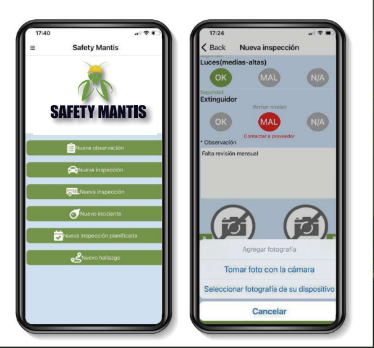Fatigue has been defined as "the body's response to lack of sleep or prolonged physical or mental exertion." As such, the more periods of insufficient sleep or physical or mental exertion increase, the more fatigued we become. This fatigue can only be reduced with adequate rest.
However, for workers employed at atypical hours, such as shift, late-night and extended-hour work, opportunities for adequate rest and recovery are limited.
Reduced or disrupted sleep is associated with fatigue and alters brain regions with short- and long-term effects on intellectual functions.
This can affect decision making, attention, and concentration, which can have significant negative impacts on performance and safety.
Some studies have shown similarities between cognitive and physiological impairment as a consequence of sleep deprivation and alcohol-induced impairment.

Sleeping less than 8 hours has the same sedative effect as drinking between 10 and 11 beers; and being awake for 17 consecutive hours affected performance in the same way as a BAC of 0.05 %.
Sleep deprivation can have an effect on short-term memory and speed of performance; and an increasing number of years of shift work can impair memory performance and accelerate brain aging. Unfortunately, leaving atypical work schedules does not necessarily guarantee a rapid return to normal cognitive functioning. Studies have shown that it may take up to 5 years to gradually regain normal intellectual functions.
A recent survey reported that 43 % of workers in the United States admit that they do not get enough sleep, thus affecting their ability to make essential decisions at work10. While 1 in 3 workers on normal day shifts report not getting enough sleep, the prevalence of insufficient sleep is highest among those who work night shifts: more than 60 % of night shift workers report not sleeping between 7 a.m. and 7 p.m. 9 recommended hours per day. Insufficient sleep and the consequences of fatigue endanger not only your safety, but also the safety of your employees. Fatigue at work can also have a devastating public effect, especially in occupations with high-risk consequences. This is best illustrated by well-known disasters such as the Three Mile Island nuclear accident and the grounding of the Exxon Valdez oil tanker.
But job fatigue doesn't just stay in the workplace.
The effects can be considered more broadly as a public health and safety concern, for example when tired workers drive on public roads.
The National Highway Traffic Safety Administration estimates that drowsy driving was a factor in 91,000 police-reported car crashes in 2017, resulting in approximately 50,000 injuries and 800 deaths. However, the general consensus is that this is an underestimate of the impact of drowsy driving, as not all crashes are reported to the police and fatigue can be a difficult causal factor to identify.
The Spillover-Crossover model of work-life interaction describes how work experiences can spill over from a person to their home life and family members.
Fatigue can affect mood and psychological well-being with negative consequences for the family. Studies have indicated that fatigue can spread from workers to their partners, limiting personal resources and time to deal with household responsibilities and social recovery.
In addition, the affectation of intellectual functions and the ability to make decisions can jeopardize the development and safety of the people in charge. It has been established that shift work increases the likelihood of separation or divorce, especially for parents who work nights, and negative developmental and school outcomes for children.
Ideally, non-work time allows you to recover from work. However, insufficient recovery due to household and other responsibilities can worsen fatigue, leading workers to return to their jobs in a perpetual and even cumulative state of fatigue.
So what can be done to stop this cycle? Since fatigue can come from a variety of work and non-work sources, a holistic, multi-level approach is required for mitigation strategies at the community, workplace, home, and individual levels. Shared responsibility is needed between workers, employers and the community to ensure occupational and public health and safety.
Comment: chronic fatigue is a trigger for the deterioration of the worker's health, it is important to train workers in the importance of adequate sleep hours that allow a healthy physical and mental recovery, with this we prevent human error that is the cause of accidents at work and that is also part of the symptoms related to the development of an occupational disease due to ergonomic and psychosocial risk factors


